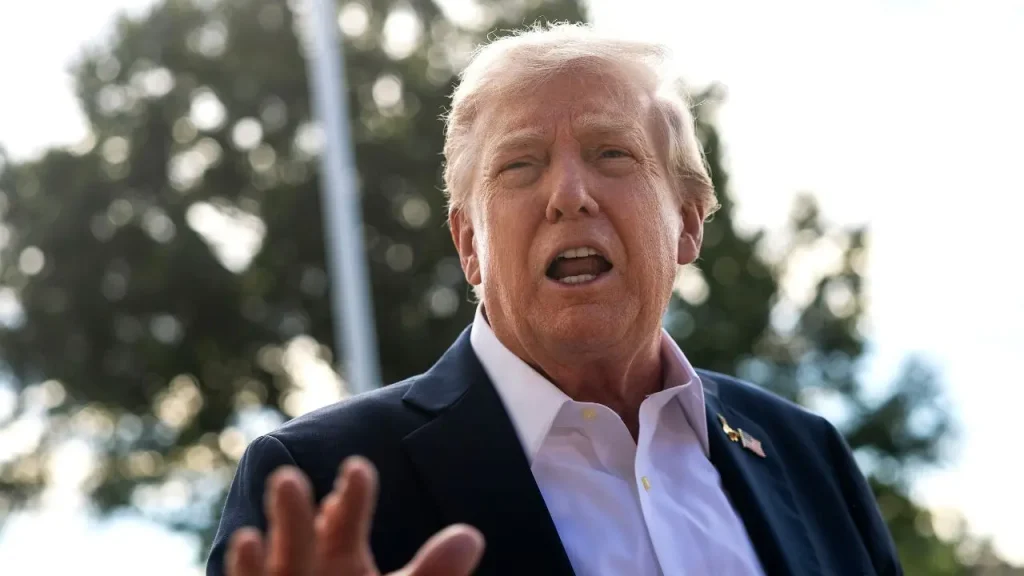White House Meeting Faces Uphill Battle to Prevent Government Shutdown
As a pivotal meeting between President Donald Trump and congressional leaders approaches, Washington braces for what many see as an almost inevitable government shutdown. Set for Monday afternoon, the 2 p.m. meeting brings together top bipartisan congressional leadership just hours before federal funding expires at midnight Tuesday. The tension is palpable as Senate Minority Leader Chuck Schumer and House Minority Leader Hakeem Jeffries prepare for their first face-to-face encounter with President Trump since his return to office. With memories of past contentious meetings lingering—including one where former Speaker Nancy Pelosi dramatically walked out—expectations for productive dialogue remain low.
The meeting comes amid a troubling absence of substantive negotiations between the parties. Democrats have staked their position on reinstating funding for public broadcasting and maintaining Affordable Care Act subsidies, while Republicans have shown little willingness to compromise. The House has already passed a simple stopgap measure that would maintain current funding levels, and then Representatives promptly left Washington—a move that underscores the dysfunction gripping Capitol Hill. With only the Senate remaining in session and a procedural vote requiring 60 supporters to overcome a filibuster, the mathematical and political realities suggest a shutdown is becoming increasingly likely with each passing hour.
Should the government shut down as anticipated, it would mark another chapter in the ongoing saga of fiscal brinkmanship that has characterized Washington politics in recent years. The last shutdown under Trump’s previous administration stretched for a record-breaking 35 days in late 2018 and early 2019, centered around disputes over border wall funding. This time, with House Democrats planning to gather at the Capitol late Monday afternoon while their Republican counterparts remain absent from Washington, the political theater continues even as essential government services hang in the balance. The stark partisan divide reflects deeper issues of governance that have repeatedly brought the nation to the edge of fiscal cliffs.
What makes this potential shutdown particularly concerning is the apparent lack of urgency among key decision-makers. There have been no serious negotiations or exchange of offers for weeks, suggesting either a strategic calculation or a troubling indifference to the consequences of a shutdown. Federal workers face furloughs, government services will be disrupted, and national parks may close—all while elected officials engage in a political standoff. The situation highlights how budget negotiations have transformed from practical governance matters into symbolic battles where compromise is increasingly viewed as capitulation rather than responsible leadership.
For ordinary Americans, another government shutdown means more than just political headlines. It represents a tangible failure of the system designed to serve them. Essential workers will continue their duties without pay, while others will be sent home uncertain about when their next paycheck will arrive. Tourism will suffer as national monuments and parks close their doors. Even on Capitol Hill itself, basic services like garbage collection and tours will be suspended. These real-world impacts often get lost in the political calculus, yet they affect communities across the country in ways that political rhetoric rarely acknowledges.
As the clock ticks down toward midnight Tuesday, the meeting at the White House represents perhaps the final opportunity to avert a shutdown. However, with House members already departed, the Senate facing procedural hurdles, and deep divisions between the parties on spending priorities, even a temporary resolution seems increasingly out of reach. The pattern of governance-by-crisis has become so normalized that many in Washington now view shutdowns as merely another negotiating tactic rather than a failure of the political process. Unless something dramatic changes in the coming hours, Americans will once again witness their government closing its doors—not because it must, but because those elected to keep it running couldn’t find a way to work together.


